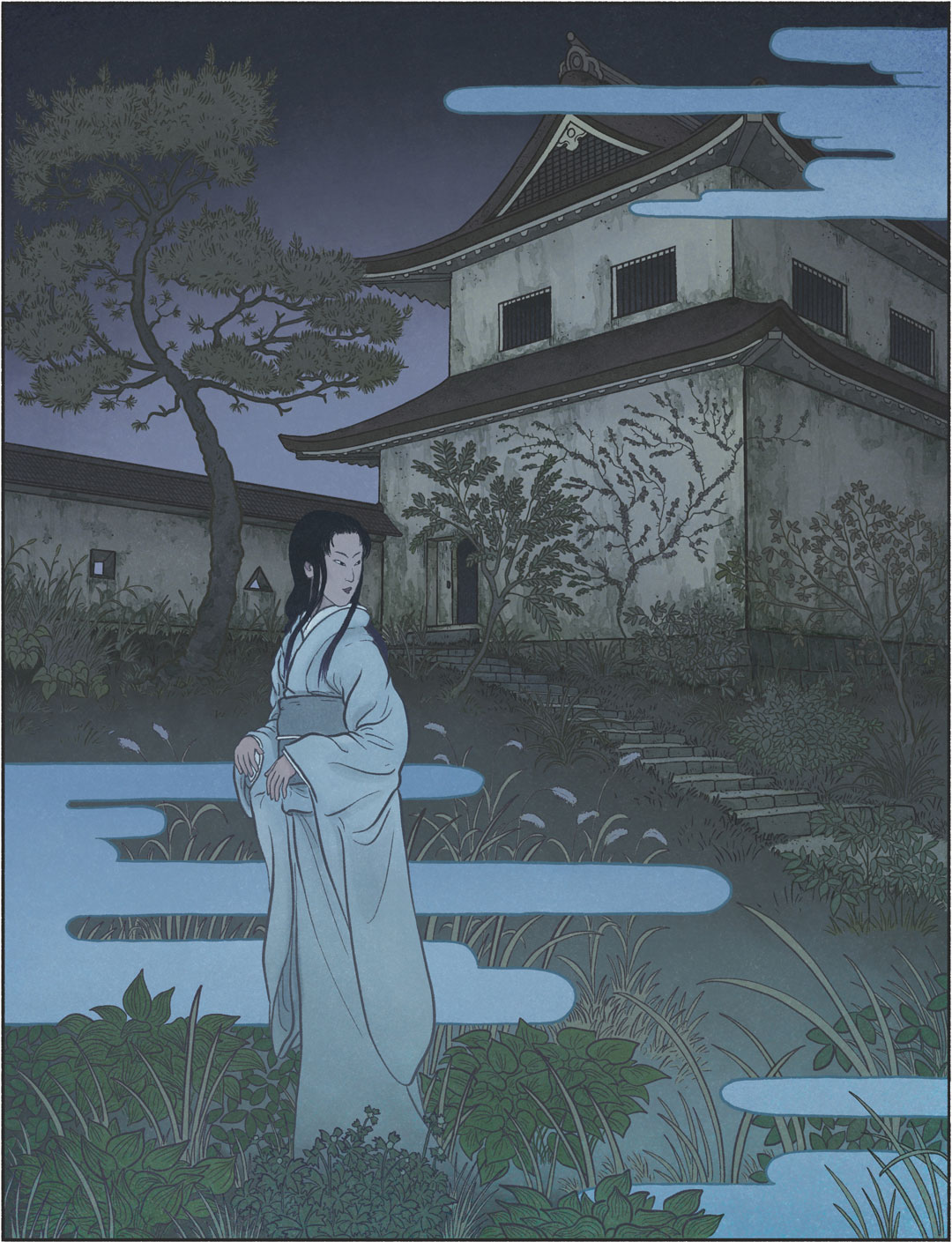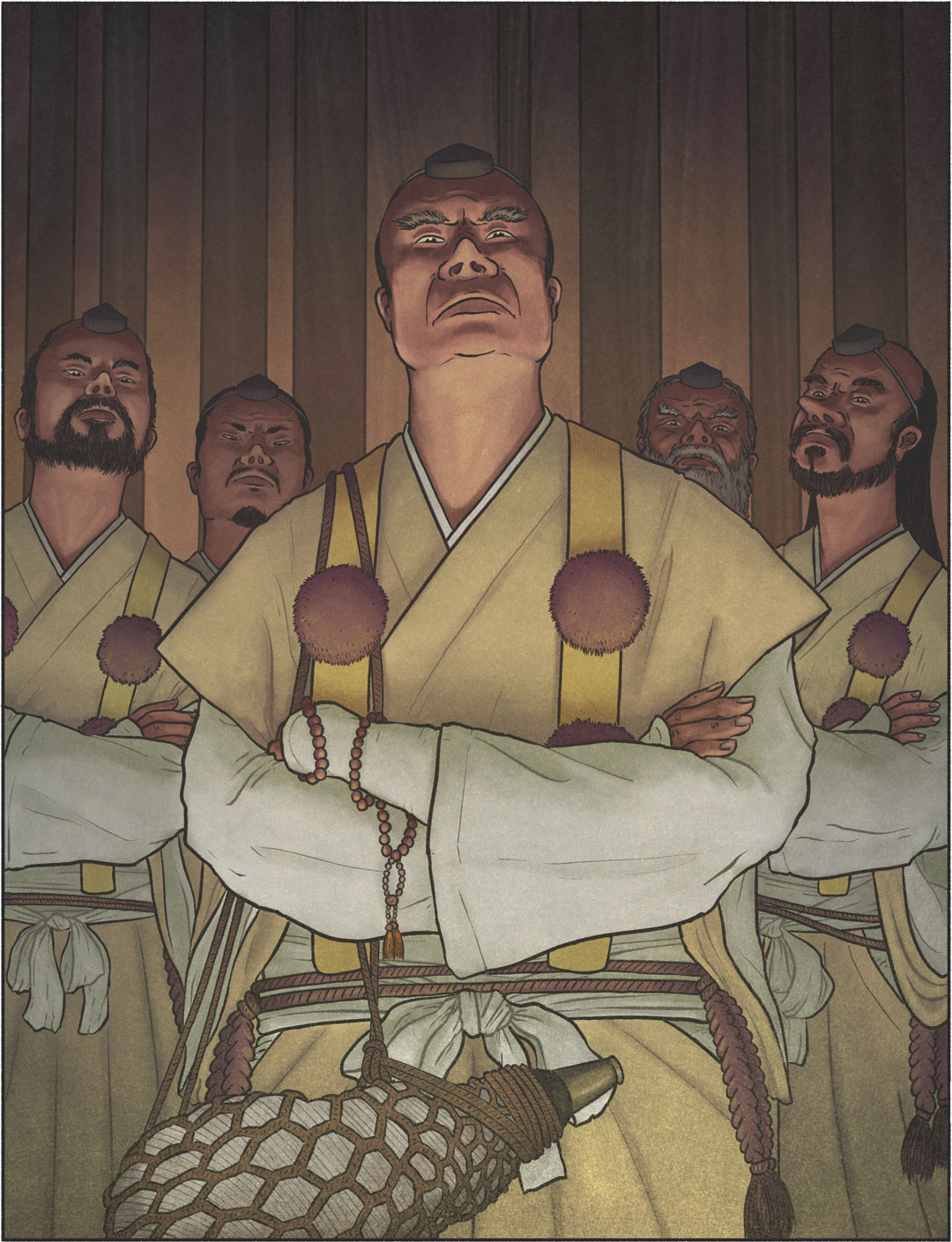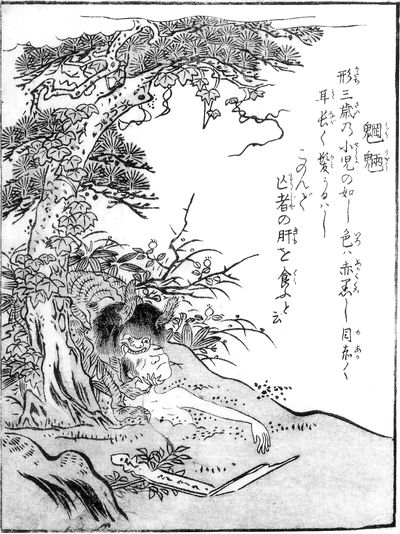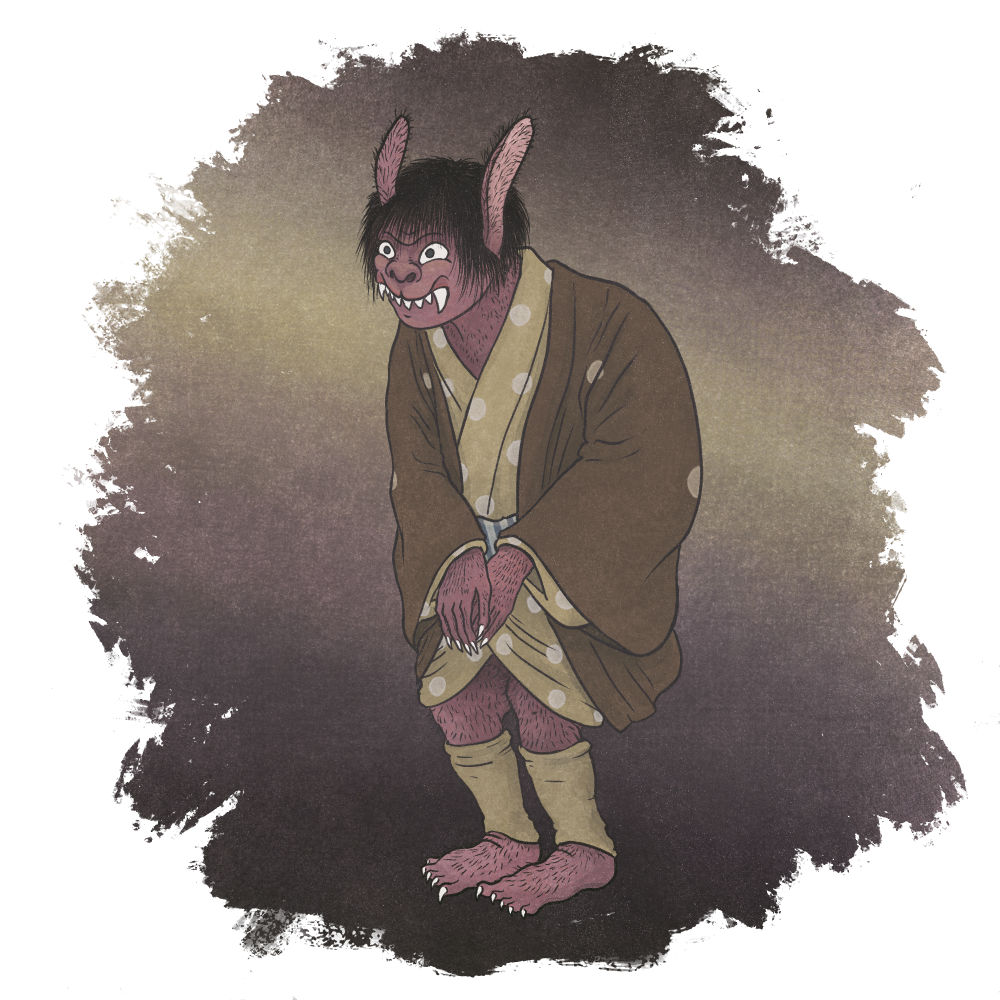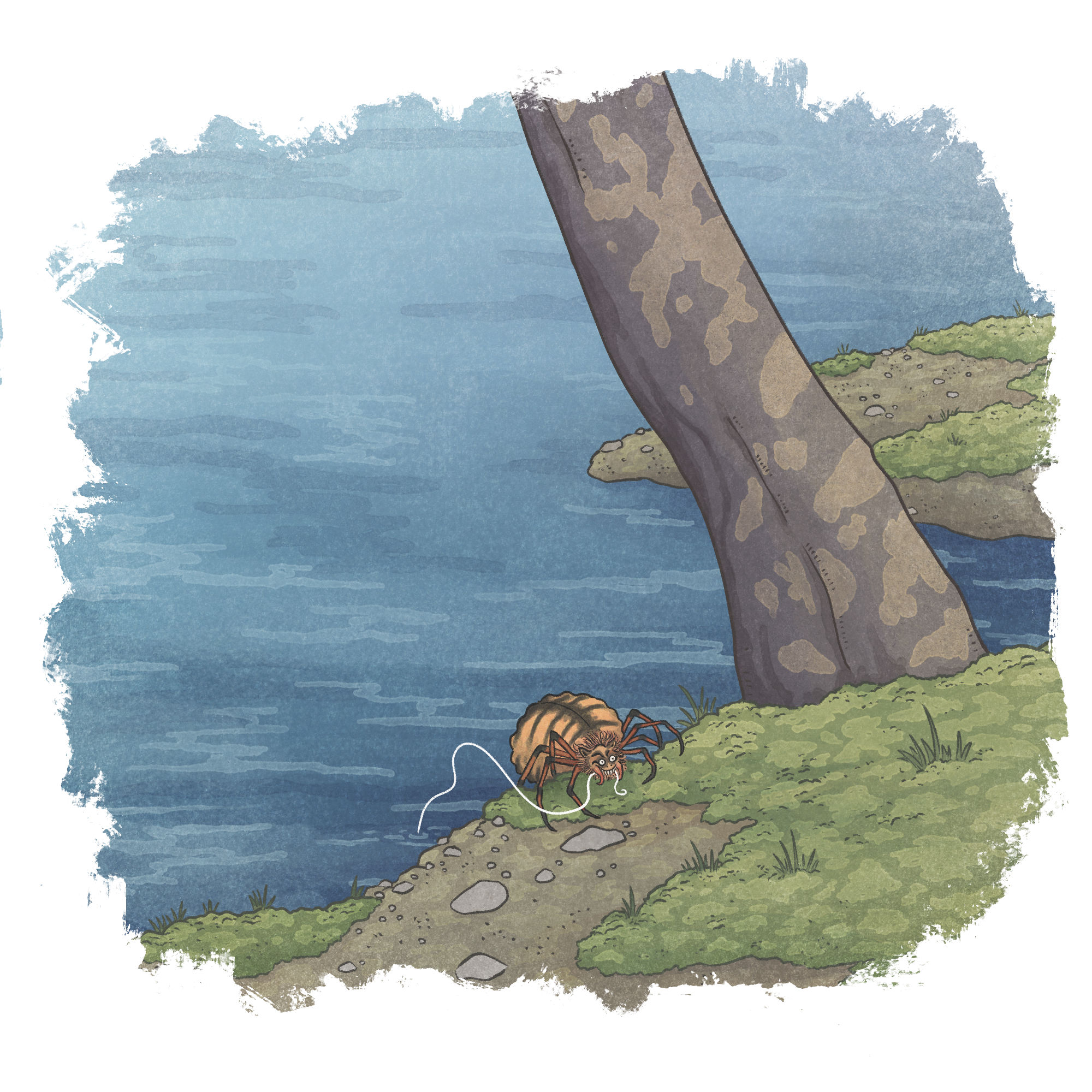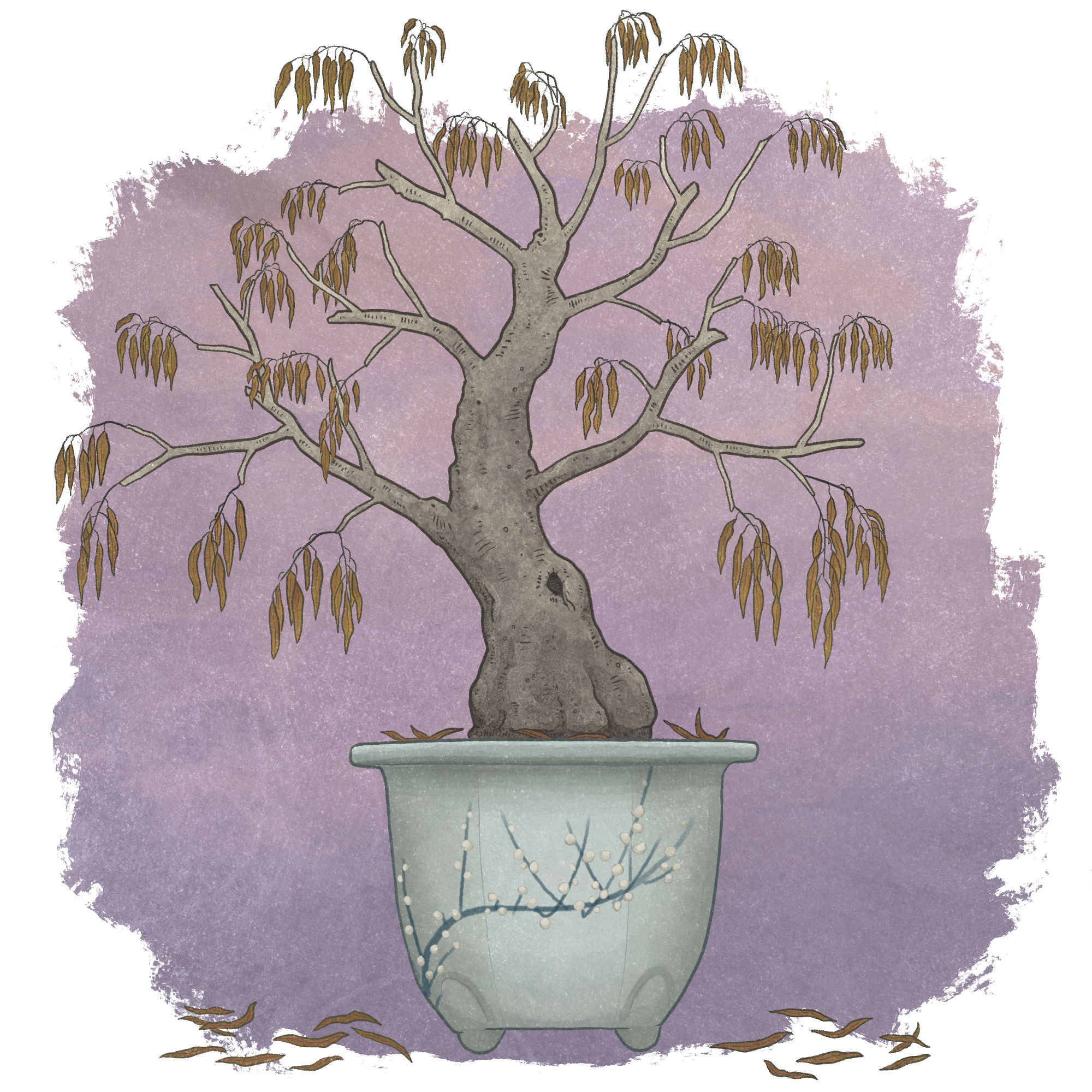This weekend I am in Kyoto for the KaiKai Yokai Festival and Mononoke Ichi yokai market. And while I would love to be able to paint these two days, this festival is super busy and there’s just no way to operate a booth as well as complete a painting. So I’m scheduling this weekend’s posts in advance just to make sure you are all supplied with yokai while I am away on business! I’ll also have photos to share of the festival after I get back, but for now please enjoy this preview of my upcoming book, Echizen-Wakasa Kidan!
(And if you haven’t checked it out yet, visit my Kickstarter for the book and check out what great rewards you can get if you back this project!)
Tonight’s story is from A Daimio’s Government, by W. E. Griffis. This is a neat one, because it was recorded by one of the first foreigners in Japan! Griffis lived in Fukui for a time, and there is a memorial to him along the Asuwa River in the heart of the city. The fact that one of the earliest foreigners to arrive in Japan was stationed in Fukui is a testament to the high status Fukui had in Japan prior to the 20th century. Below is not my own translation, naturally, as Griffis wrote this in English. But I did make a couple of edits for clarity.
The Ghost of Ippaku
Matsudaira Tadanao was in his youth a brave warrior, one of the first to scale the walls of Osaka Castle when Iyeyasu besieged it in 1615. He killed many enemies with his own hands, but in his old age he became very wicked, and treated the people very cruelly. In the book called Echizen mei seiki kō, a general guidebook and gazetteer of the Province in twelve volumes, nothing to the detriment of the house of Echizen was allowed to be published, but the people held many traditions of his cruelty, which I learned from them. It is said that Tadanao when once out hunting saw high in the air the vision of a lovely woman which so fascinated him that he dispatched emissaries to all parts of Echizen to find the original. A woman of surpassing charms answering to his description was found walking in the fields, and was brought to the prince, and he made her his concubine. She proved to be a demon in female human shape, and prompted her lord to to do many of his wicked acts. He had an unnatural passion for hacking criminals and animals in pieces with his sword. His chief delight was to rip up pregnant women to discover the details of fetal life. In all these, and other villainies, his concubine Ippaku encouraged him. To this day the rude peasantry of Echizen believe the spirits of the dead warriors killed at Osaka revenged themselves by entering into this woman Ippaku, and sending her to tempt, deceive and curse the house of Echizen.
One mossy and overgrown part of Fukui Castle, kept always closed, was pointed out to me as the place where the ghost of Ippaku lurked. No one durst enter this. A few years ago, the people said, the prince sent a strong brave man to watch this gloomy nook at night. After long waiting, he saw at midnight, a lovely woman emerge from the tower, and face the damp and overgrown ramparts. Passing him, she said that she was the spirit of Ippaku, but that if he told anyone that he had seen her, he would shortly die. He then perceived her back was that of a hideous, slimy monster. The next morning, with loyal bravery, he related his experiences to his prince. A few weeks afterwards, he died. The common people and children believed that his death was caused by the spirit whose caution he had disregarded.
For his misgovernment, oppression, and wickedness, the shogun punished this first scion of the house of Echizen by reducing his revenue more than one half, leaving him but 325,000 koku, and assigning the other divisions of the province to subordinate daimyo.
